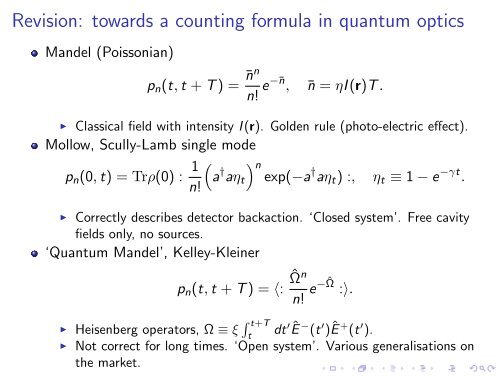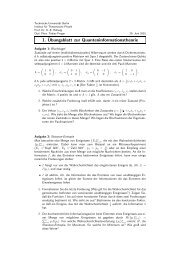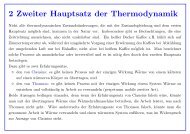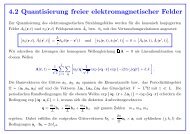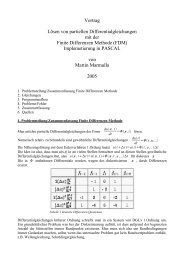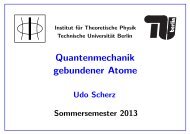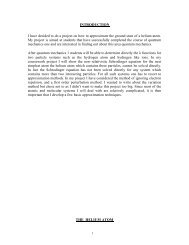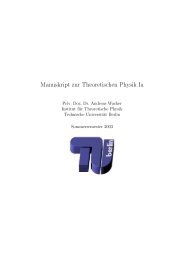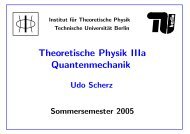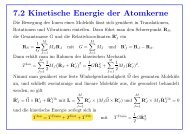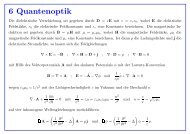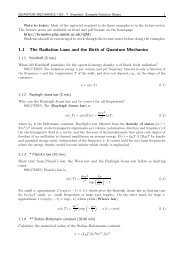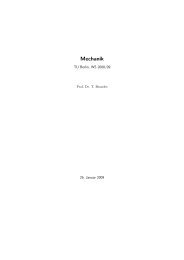Photoelectron counting in quantum optics
Photoelectron counting in quantum optics
Photoelectron counting in quantum optics
Create successful ePaper yourself
Turn your PDF publications into a flip-book with our unique Google optimized e-Paper software.
Revision: towards a <strong>count<strong>in</strong>g</strong> formula <strong>in</strong> <strong>quantum</strong> <strong>optics</strong>Mandel (Poissonian)p n (t, t + T ) = ¯nnn! e−¯n , ¯n = ηI (r)T .◮ Classical field with <strong>in</strong>tensity I (r). Golden rule (photo-electric effect).Mollow, Scully-Lamb s<strong>in</strong>gle mode1( ) np n (0, t) = Trρ(0) : a † aη t exp(−a † aη t ) :, η t ≡ 1 − e −γt .n!◮ Correctly describes detector backaction. ‘Closed system’. Free cavityfields only, no sources.‘Quantum Mandel’, Kelley-Kle<strong>in</strong>er◮◮p n (t, t + T ) = 〈: ˆΩ nn! e−ˆΩ :〉.∫ t+THeisenberg operators, Ω ≡ ξ dt ′ Ê − (t ′ )Ê + (t ′ ).tNot correct for long times. ‘Open system’. Various generalisations onthe market.


